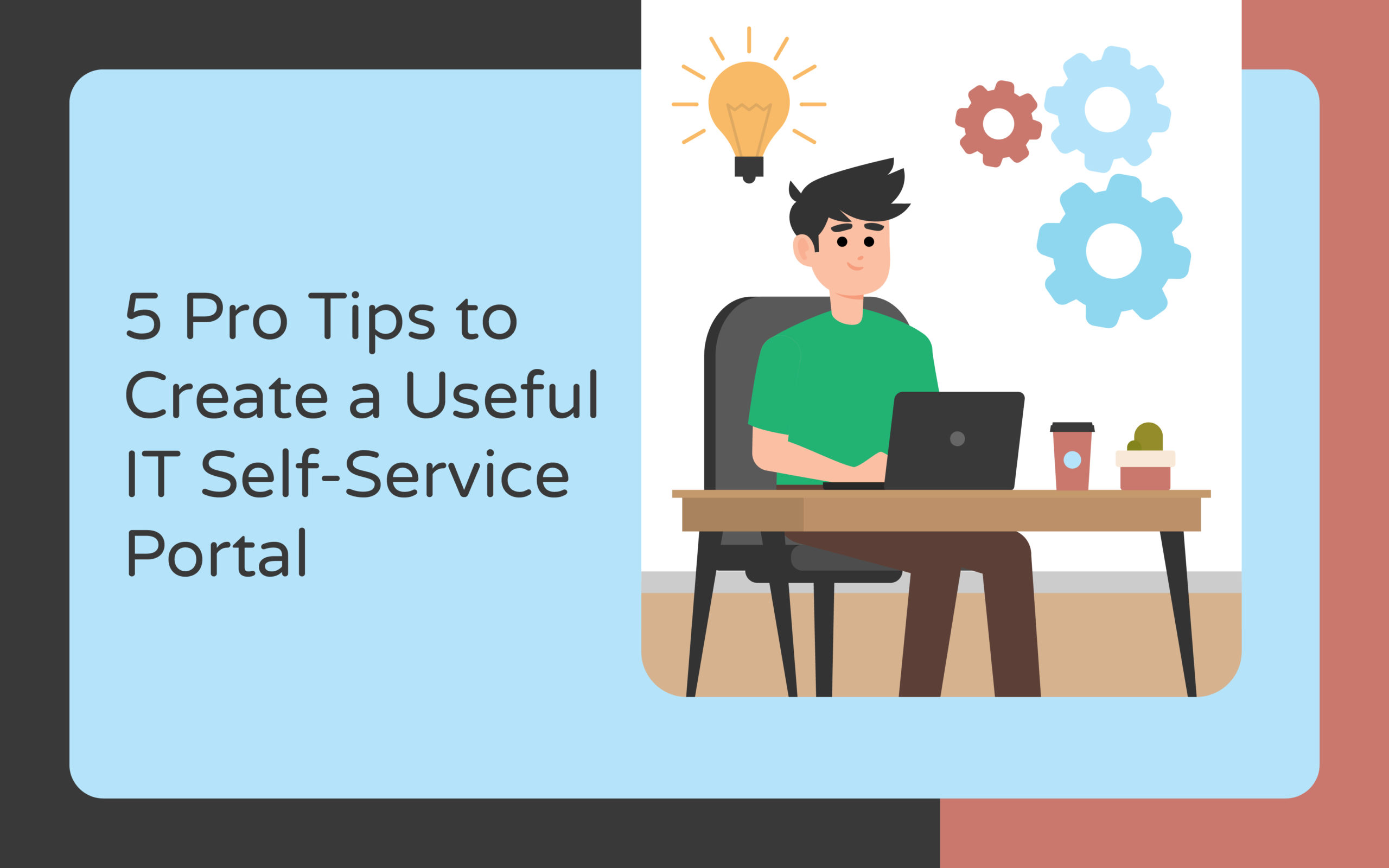Effective self-service can improve your customer experience and reduce the pressure on your support teams. If you would like to refresh your knowledge on self-service, just read our article which explains how to make a success out of IT self-service!
Based on our conversations with our customers, let’s have a look at 5 tips to help build an effective self-service portal.
Pro tip 1: Get an early win
Building a self-service portal which your customers want to use presents a Catch 22 situation. Although an effective portal will save your support employees time, they need to first dedicate significant amount of time to building an accurate knowledge base. But if they had spare time, they wouldn’t need a self-help facility, right?
The logical solution is to minimise the workload. Our advice is to be selective with the topics your knowledge base addresses. What are the most commonly used questions or requests which lend themselves to self-service? Start with 5-10 subjects and make sure the information presented, and the workflow used to guide the customer to the solution, works perfectly.
It’s important that your self-service portal works first time for every customer, otherwise they won’t use it. If they don’t use it, the project will lose momentum and you’ll fail to reach the ‘tipping point’ where the time saved by self-service surpasses the time required to build and maintain it.
Pro tip 2: Put the work in
Once you’ve passed the initial proof of concept, it’s time to invest more time in the build. In terms of content, there are no shortcuts here. Other vendors may try to convince you that their technology will fix everything, but it won’t. Yes, in future, AI may be advanced enough to diagnose, fix and write the self-service documentation, but for the foreseeable future, we’re not even close. For now, you need to create content that is accurate and useful manually.
Crucially, your content must make sense to customers, not just employees. Avoid jargon and abbreviations. Just because you know what they mean, it doesn’t mean your audience will. Seek feedback from the least technically-minded people you know and if the fix works for them, you’ve succeeded.
Of course, the quality of the information is only part of the story. Which takes us onto the next tip.
Pro tip 3: Ease of use (for customers)
As customers, we’re all impatient and intolerant with technology. IT customers are savvy enough to realise that by using self-service, they are helping the IT department by reducing the support burden and this cranks up the pressure further. Simply put, if the interface and user experience is poor, customers won’t use it.
This means that an effective self-service portal must be intuitive to access and use and ultimately, make it easy to find the right information. This is non-negotiable. How can you ascertain user-friendliness? You may immediately think of gathering customer feedback or even creating a focus group. But you may not need it. Approach your own portal as a customer and be honest with yourself. If you were a customer, would you want to use the facility? Does it stack up against other digital services you use on a daily basis? If the answer to either question is ‘no’ you need to reconsider the portal technology you are using.
Pro tip 4: Ease of use (for employees)
As we’ve already covered, populating your knowledge base is already a time-consuming process. Yet, the process of adding and updating content can be dramatically reduced if the portal is easy to use. Your staff will simply not get time to update the knowledge if the backend of the portal itself is slow to use and difficult to navigate.
Our customers have reported the drag and drop workflow facility in Richmond Customer Service Portal has helped immeasurably in this respect. Because it requires no coding, they are able to quickly alter the workflow, edit the information and add additional knowledge quickly. Yes, it still requires effort to compile and write the knowledge, but the engine makes it far easier to complete the process.
Pro tip 5: Test and measure
We’ve already mentioned the importance of creating content relevant to your customers, and the only way to prove this is test and measure. A mechanism for recording and responding to feedback must be in place from launch. Customers are unlikely to give second chances, so it’s important that you have a method for collecting feedback and show your customers you are serious about addressing their concerns.
Another endorsement for test and measure comes from the fact that knowledge is an organic, ever-changing entity. Knowledge is never ‘finished’, it needs to be constantly renewed and improved to ensure it remains useful for customers. However, we’ve got a number of customers who have passed the knowledge ‘tipping point’ who now save far more time than they spend maintaining knowledge.
Conclusion
As you can imagine, there are unlimited benefits that come from creating a useful IT self service portal. It simplifies customer interaction, decreases clutter, it’s always available, you get fewer inbound tickets, meaning your agents can devote more time to the tickets you do get. By implementing the tips mentioned above, you will maximise your business’s output immensely. If you want to know more about how an IT self service portal can help you, just get in touch!
